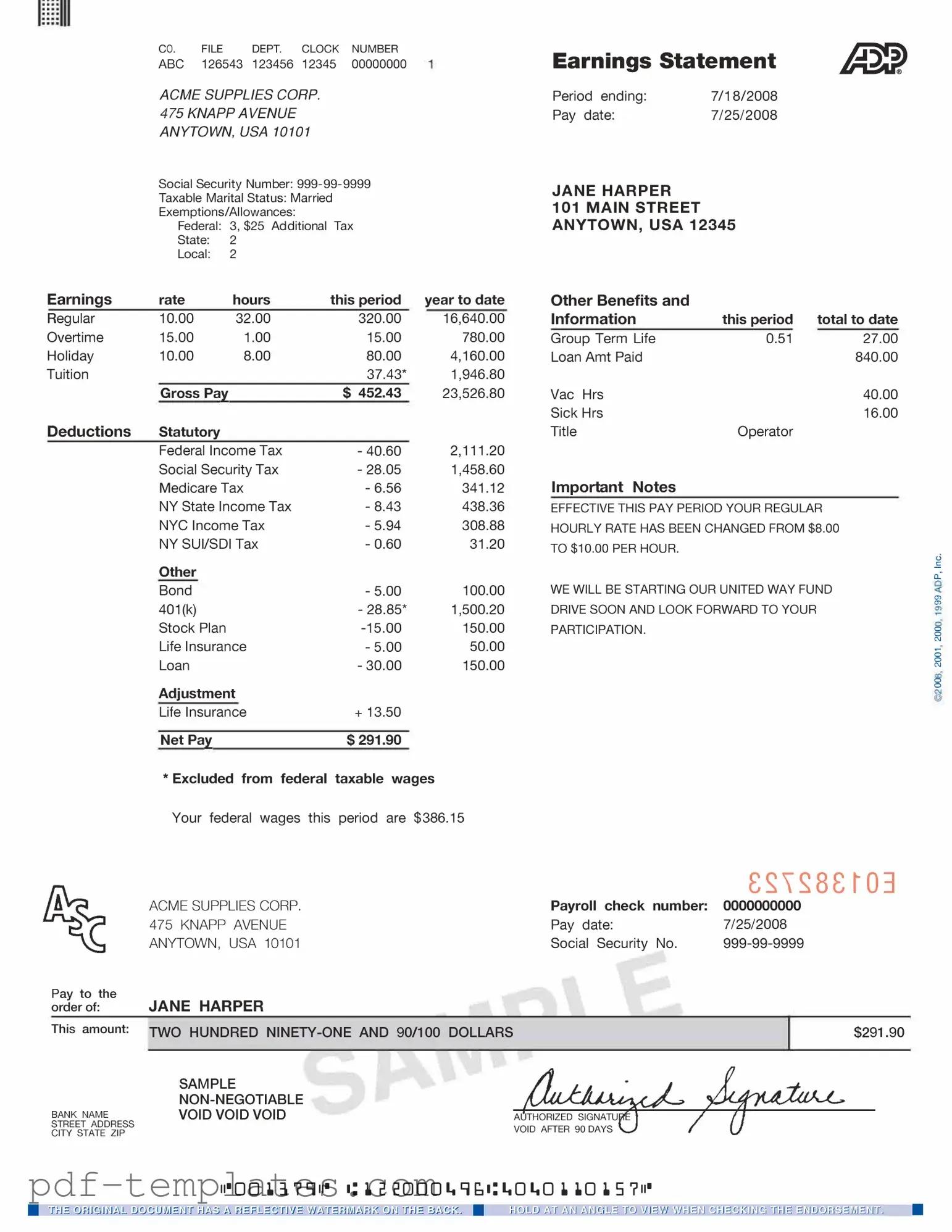The W-2 form is a key document that employees receive from their employers at the end of each year. It summarizes an employee's total earnings and the taxes withheld throughout the year. Like the ADP pay stub, the W-2 provides important financial information, but it covers a longer period. Both documents are essential for tax filing, ensuring that employees have accurate records of their income and deductions.
The pay statement is another document similar to the ADP pay stub. It details an employee's earnings for a specific pay period, including hours worked, gross pay, deductions, and net pay. While the ADP pay stub may be more standardized, pay statements can vary by employer. Both serve the same purpose of informing employees about their compensation and any deductions taken from their paychecks.
The 1099 form is used for independent contractors and freelancers. This document reports income received outside of traditional employment. Similar to the ADP pay stub, the 1099 outlines earnings but does not include tax withholdings. Both documents are crucial for tax reporting, helping individuals understand their income sources and obligations.
The payroll summary report is an internal document used by employers to track overall payroll expenses. It consolidates data from all employee pay stubs, providing a comprehensive view of total wages, taxes, and deductions for a specific period. While the ADP pay stub focuses on individual earnings, the payroll summary report offers a broader perspective, beneficial for financial planning and budgeting.
The earnings statement is similar to the ADP pay stub in that it details an employee's pay for a specific period. It breaks down gross pay, deductions, and net pay. However, an earnings statement may be issued less frequently than a pay stub. Both documents ensure employees are informed about their earnings and any deductions made from their paychecks.
The paycheck is a physical or electronic document that represents payment for work performed. It includes the same essential information as the ADP pay stub, such as gross pay, deductions, and net pay. While the paycheck is the actual payment method, the pay stub serves as a record of that transaction, providing a detailed breakdown for the employee's reference.
The tax withholding statement is another important document that relates to the ADP pay stub. It outlines the amount of federal, state, and local taxes withheld from an employee's paycheck. This document is crucial for understanding tax liabilities and ensuring proper tax payments. Both documents work together to provide clarity on how much an employee earns and what is taken out for taxes.
The benefits statement is similar in that it provides information about employee benefits, including health insurance and retirement contributions. While the ADP pay stub focuses on wages, the benefits statement details the value of non-cash compensation. Both documents are vital for employees to understand their total compensation package, including both cash and non-cash benefits.
